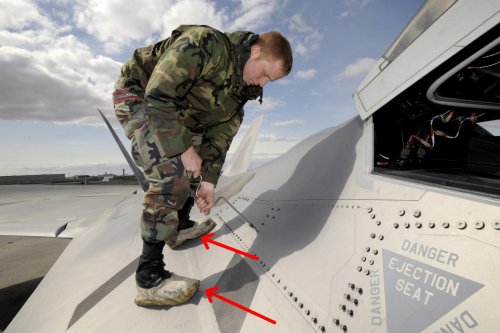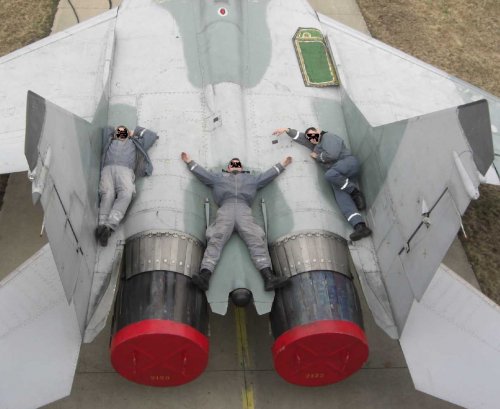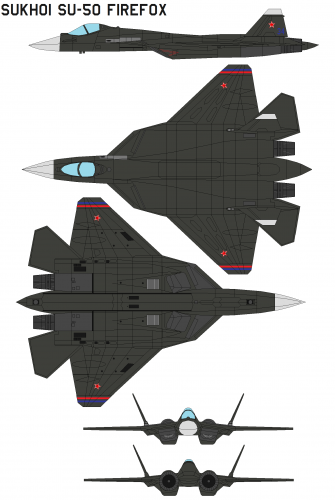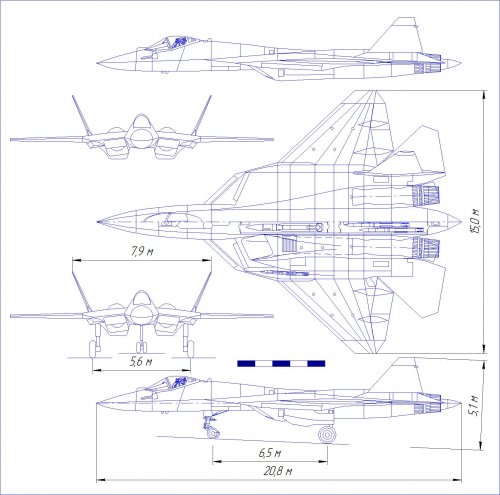Woody said:
Avimimus said:
Ah... well there was an article in one of the last threads (III or maybe II) which mentioned a decision to reduce the original speed requirements in order to meet payload (range/multi-role) requirements. Wasn't the design originally supposed to top M2.6?
How much less than Mach 2.6? Still going to be faster than the F-22 and definitely the F-35 I'd recon.
I actually think it should be apparent just from the designs appearance: I'm no expert in aerodynamics, but the blended fuselage is a good compromise between lift, volume and surface area...
The SR-71 had a blended Fuselage ;D
Cheers, Woody
True, how the fuselage is blended matters...

To be honest the design is far from a perfect lifting body - but the flattened fuselage combined with the enlarged LERX's/compound delta gives a strong impression that the wings proper aren't the only lifting surfaces...
As for the speed - it might be good to distinguish between the aircraft fully loaded and with a reduced load. I'm sure the power to weight ratio matters and a quick glance at the engines and dimensions suggests that this design will have a very good power to weight ratio. The nice thing about reasonably large internal dimensions and a low wing loading is that you can take advantage of the unloaded power-to-weight ratio in order to carry heavier payloads with reduced performance.
Abraham Gubler said:
The reliance on speed appears to be part of the Russian strategy of compensation for both a lack of LO and sensor reach and integration (in their overall force not just fighters). Combined with the short range against LO aircraft side looking sensors (wing leading edge L Band and gimballed ESAs) this would give them some survivability against ambush by F-35s. Cruising through the battlespace at Mach 1.6ish and with the ability to see an F-35 on its beam a few tens of miles away (at most) would give them a chance to turn away and use their speed to hopefully escape missile interception. Of course if they then turn into the direction of another F-35 well…
Not the best strategy but better than certain death.
It might be good to be careful about interpreting emphasis on speed. It should be remembered that the Mig-25 entered service before LO technologies reached a point where they became a core part of the design. This Russian push for Mach 2.8 fighters may also have been partially a response to their strengths at the time - the pioneered titanium industry. Of course, speed seems to be very important in reducing the effective range of enemy missiles (as it shrinks the effective no-escape zone) and thus potentially critical in BVR engagements. If you have an extended range infra-red guided derivative of the RVV-AE (as the Russians are developing), which is capable of very high manoeuvrability - it may be very difficult to escape from short range engagements. There is a lot of reason to think that speed may have limited utility if you can't get an adequate sensor lock for your weapons systems at more than a few tens of kilometres.
Soviet Avionics were definitely behind NATO during much of the cold war, however it is not a safe assumption to assume that this advantage will remain (if it exists today). A lot of technologies are now widely available (eg. in computing) and the NATO has tended to commit to its avionics systems a decade earlier than Russia (which couldn't due to the economic collapse and has since had a decade for industrial espionage and scientific development). The other basic fact is that we do not know much about stealth technologies. Perhaps RAM coatings are fairly easy to develop and it is impossible to gain any true 'lead' in this area. Perhaps radars with datalinks and better processing will be able to reconstruct the possible position of enemy aircraft. Maybe the use of multiple sensor types will limit the effectiveness of stealth designs. The fact is we don't know the first thing about stealth and even those with access to the best data and espionage will be scratching their heads over some points until actual combat experience comes about (which will hopefully never happen).
And the reason for his title came from the predictably biased f-16.net members:
"As for PAK-FA this is essentially a dead project. Two backward countries try to develop V generation fighter being 20-30 years behind the US. Official PAK-FA project cost is claimed to be 8-10 billion USD. Now after eight years we saw an empty mock-up flying with Flanker's interior because there is no equipment needed."
So very funny.

I never saw either country as being particularly backward (although both have certain issues they need to work out). The same goes for us and the U.S.
The design has (or will have) a better power-to-weight ratio, a multi-role capability, potentially has greater range at lower speed (guessing), is clearly more nimble, has an extra fifteen years of R&D, most likely has U.S. RAM coatings smuggled out of Kosovo (plus indigenous RAM research), access to other espionage and leaked material from the last fifteen years, a new integrated 360 degree sensors system and it is still obviously "20-30 years" behind U.S. simply because it is Russian?
Doesn't this remind anyone else of the good old days?





